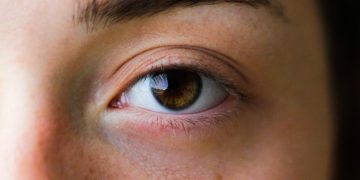Cosmetic reconstruction has entered a new era—one shaped not by scalpels alone, but by algorithms, biomaterials, living tissues, and ultra-precise fabrication technologies. The convergence of 3D printing and biotechnology is enabling outcomes once considered science fiction: fully customized implants, lab-grown skin with natural pigmentation, and facial structures engineered with millimeter-level accuracy. As medical aesthetics leans further into regenerative science, we are witnessing a profound shift from enhancing what exists to rebuilding what was lost—and even designing what could be.
But with these breakthroughs come equally complex ethical, cultural, and medical questions. How far can this technology go? And more importantly—how far should it go?
This article explores the transformative potential of 3D printing and biotech in cosmetic reconstruction, the mechanisms driving these innovations, and the delicate ethical boundaries that must evolve alongside them.
1. The Rise of Custom Implants: Precision Becomes Personal
Traditional implants—whether chin, cheek, orbital, or cranial—are mass-produced, limited in size options, and require surgeons to manually adjust them during procedures. This approach works, but it is far from ideal for perfect symmetry or complex anatomical cases.
How 3D Printing Changes Everything
Modern imaging tools like CT and MRI scans allow surgeons to capture a patient’s actual bone structure, which is then digitally converted into a 3D model. Engineers use this model to design an implant that:
- Matches anatomical contours flawlessly
- Restores symmetry in trauma or congenital cases
- Minimizes surgical adjustments
- Improves fit, comfort, and long-term stability
3D printing can produce implants using:
- Medical-grade titanium
- Biocompatible polymers
- Porous structures encouraging soft tissue integration
Surgeons can even simulate the procedure digitally, predicting outcomes before the patient ever enters the operating room.
Case Applications
- Mandibular reconstruction after tumor excision
- Orbital implants correcting asymmetry
- Custom nasal implants for ethnic-sensitive rhinoplasty
- Cranial plates recreating natural skull curvature
What was once a one-size-fits-some market is now a personalized precision field—with satisfaction rates climbing as customization becomes the norm.
2. Regenerative Skin Grafts: From Damage Repair to Aesthetic Renewal
Skin grafting used to be limited: surgeons would harvest healthy skin from one area to repair another, often leading to scarring, color mismatch, and donor site discomfort.
Biotech is rewriting all of that.
Lab-Grown Skin Has Evolved Beyond Medicine
Previously developed for burn victims, lab-grown skin (bioengineered dermal and epidermal layers) now has emerging applications in cosmetic enhancement and reconstruction.
Current regenerative approaches include:
- Cultured epithelial autografts (CEA)
Patient cells are grown into sheets of new skin. - 3D bioprinted skin
Printers deposit layers of biomaterial and living cells to reconstruct natural skin architecture. - Stem-cell–enhanced grafts
Offering improved elasticity, healing, and pigment integration.
While these technologies are primarily medical tools, aesthetic surgeons are beginning to explore them for:
- Scar revision
- Post-trauma facial restoration
- Pigmentation correction
- Anti-aging skin rejuvenation in severe cases
What makes regenerative skin revolutionary is its potential to restore natural texture and biological function—not just appearance.
3. Biotech’s Next Frontier: Living Implants and Tissue Engineering
The most futuristic advances pair 3D printing with cutting-edge cell biology to create structures that behave like the real tissues they replace.
Living Cartilage for Ears, Noses, and Joints
Researchers are developing cartilage implants embedded with living cells, offering:
- Natural look and movement
- Long-term integration with surrounding tissues
- Reduced rejection rates
This is especially promising for reconstructive rhinoplasty, where synthetic materials sometimes cause complications.
Bioprinted Fat and Dermal Layers
Instead of synthetic fillers, future facial reconstruction may use engineered adipose tissue, reducing the need for repeated injections and offering longer-lasting volume restoration.
Hybrid Implants: The Best of Both Worlds
A coming trend is the creation of implants combining:
- A rigid printed scaffold for shape
- Biologic components to encourage tissue integration
This approach may reduce infections and deliver more natural aesthetics.

4. Ethical Design: When Innovation Must Pause for Reflection
As with any major medical leap, the technology’s capabilities raise difficult questions.
Where Do We Draw the Line Between Reconstruction and Reinvention?
3D printing can easily enhance symmetry, adjust proportions, and create idealized features. But should a surgeon design a patient’s face based on beauty trends? Or what the patient thinks they want?
These ethical tensions include:
- Design bias: Should implants optimize for natural anatomy or aesthetic trends?
- Over-customization: At what point does personalization create unrealistic expectations?
- Digital identity: If a face is 3D-designed, who “owns” that design?
- Access inequality: Will only the wealthy benefit from the most advanced regenerative options?
The Need for Ethical Frameworks
Experts suggest that ethical design must center around:
- Restoring function first
- Enhancing natural balance second
- Avoiding irreversible trends
- Prioritizing psychological screening and informed consent
Biotech may empower transformation, but medicine must remain the gatekeeper of healthy boundaries.
5. The Future: Toward Fully Regenerative Facial Reconstruction
Looking ahead, several innovations are on track to reshape aesthetic medicine dramatically.
Within the Next 5 Years
- Widespread adoption of custom 3D-printed facial implants
- More natural outcomes due to precise bone-mapping software
- Improved 3D bioprinted skin for medical and cosmetic use
Within the Next 10 Years
- Living-cartilage implants becoming standard in rhinoplasty and ear reconstruction
- Fully personalized, stem-cell–derived skin grafts for anti-aging applications
- Bioprinted fat layers replacing traditional fillers
Within 20 Years
- Entire facial structures bioprinted for trauma patients
- 3D-printed organs improving facial vascular reconstruction
- Cosmetic “tissue design” blending genetics, cell science, and aesthetics responsibly
The technology is evolving fast, but its impact will depend heavily on ethical guardrails, regulatory oversight, and patient education.
Conclusion: A Future Built Layer by Layer
3D printing and biotechnology are not simply adding tools to cosmetic reconstruction—they are fundamentally redefining what is medically and aesthetically possible. The face of the future may be shaped not in operating rooms alone, but in digital workstations, cell laboratories, and bioprinting facilities.
Yet with transformative power comes a need for wisdom. The challenge for the next generation of surgeons, scientists, and policymakers is not just to innovate—but to navigate the moral landscape that innovation creates.
Cosmetic reconstruction is advancing from art and science into bio-fabrication. And the question we must confront is not just can we redesign the human face—but how should we?












































